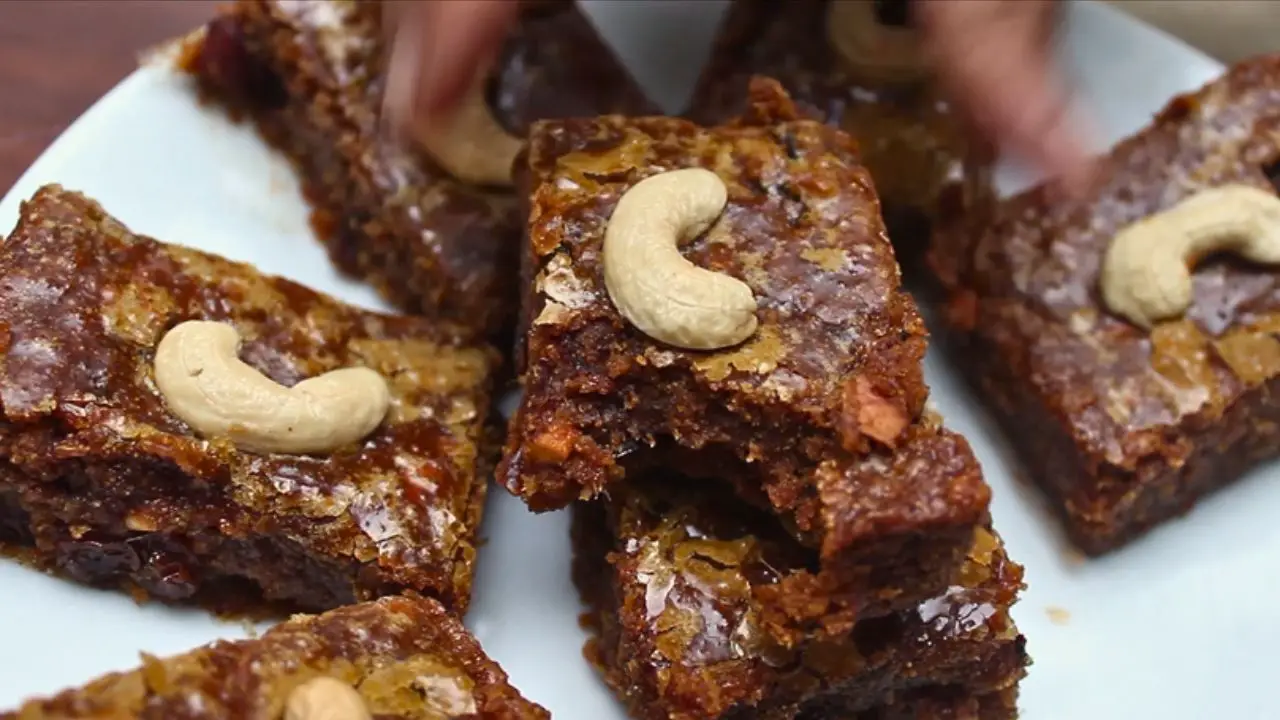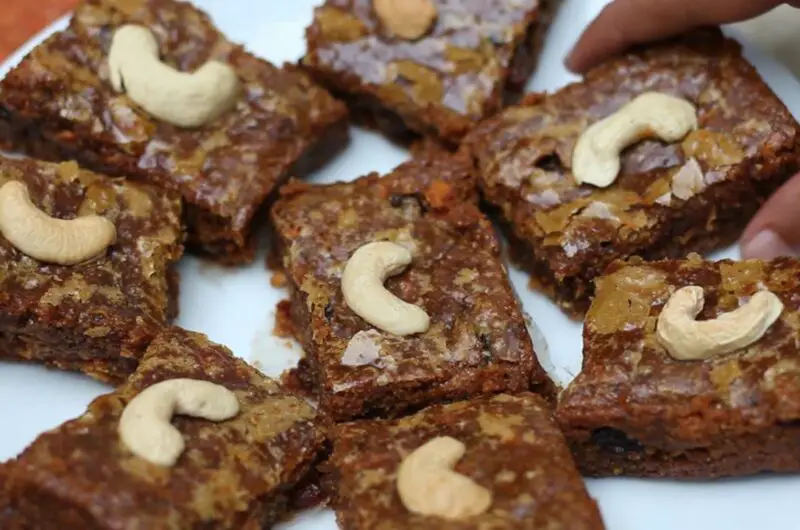If you are on the lookout for a delicious coconut cake, I have got something you’ve gotta try. This Sri Lankan Bibikkan recipe is seriously the best—so moist and full of flavor. My friend Nadee shared this killer recipe with me last week, and let me tell you, it is my new favorite.
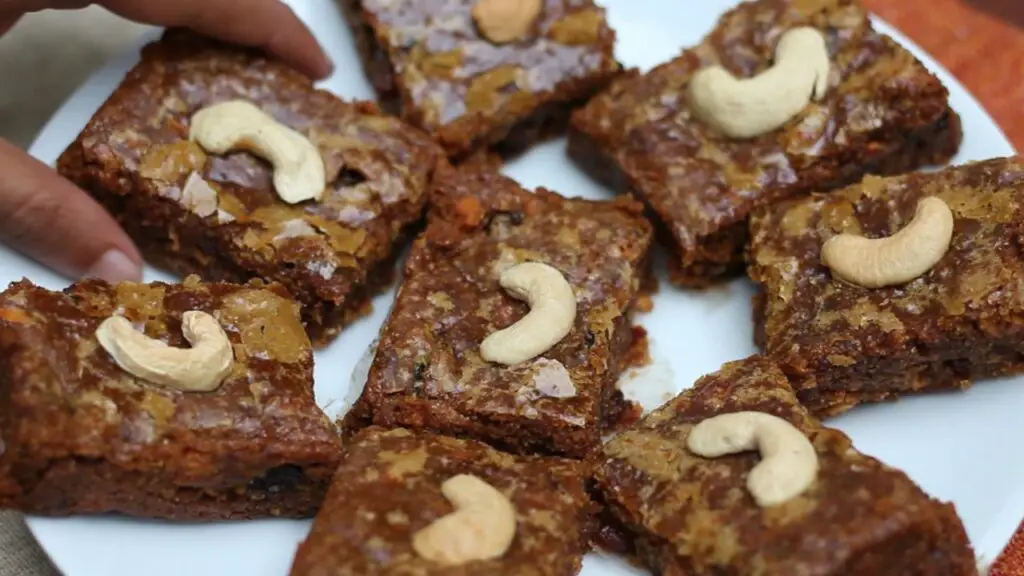
Here is how to make this Sri Lankan Bibikkan, you won’t believe how good it is!
Ingredient List for this Traditional Sri Lankan Bibikkan Recipe
Making this coconut cake recipe requires a combination of general and specialized ingredients. While you may not find them in the grocery store, I definitely suggest getting the authentic Sri Lankan ingredients for a fully flavorful experience—they give this cake that deliciously nutty and tropical taste!
1. All-Purpose Flour: Traditional bibikkan is dense and thick, so all-purpose flour is your best bet. For a gluten-free alternative, you can use rice flour. However, do your best to avoid self-rising flour, as it will make the cake too airy.
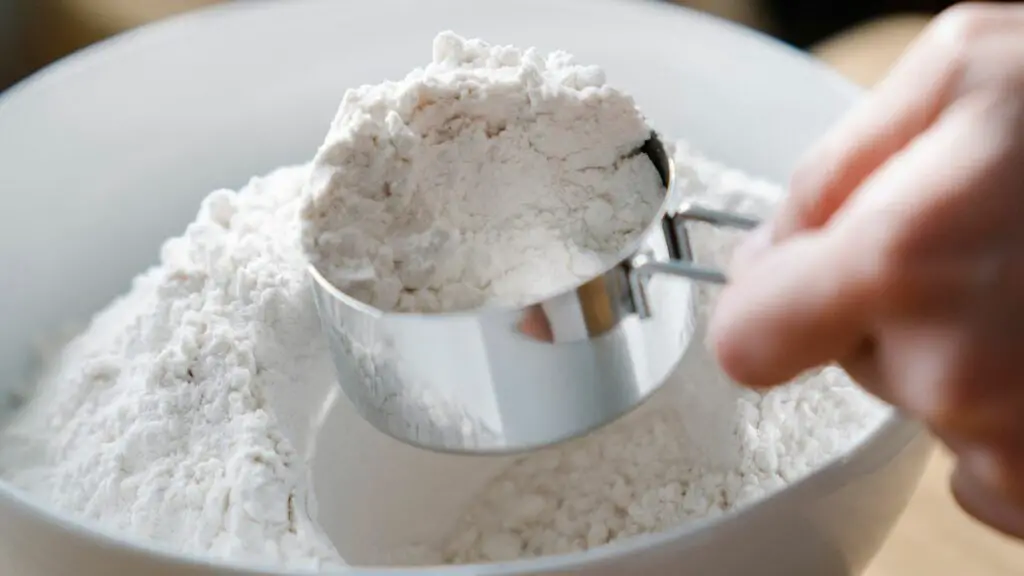
2. Baking Powder: Although traditional bibikkan recipes don’t need baking powder, adding the slightest touch can make a subtle difference. It won’t be enough to make the cake fluffy, but just enough to improve texture.
3. Jaggery: Kithul jaggery is an all-natural alternative to refined sugars with a delicious and distinctive flavor. While you can replace it with panela or dark brown sugar, I recommend using authentic jaggery, which you can find on Amazon, like the Jiva Organics Organic Jaggery below. It really brought out the rich, traditional flavors in my bibikkan.
TAP ON IMAGE TO LEARN MORE
4. Coconut Treacle: It’s a sweetener made from coconut sap, boiled until it is reduced to a thick brown substance similar to syrup. While you can find coconut treacle online, a good alternative is coconut syrup which I actually used myself.
Because I couldn’t find coconut treacle for my Bibikkan, I used Organic Nectars Organic Coconut Syrup below instead. The main difference was a slightly milder flavor, but it still complemented the recipe wonderfully.
TAP ON IMAGE TO LEARN MORE
5. Shredded Coconut: I definitely suggest going for the traditional route and using freshly shredded young coconut—the flavor is unmatched! If you don’t have fresh coconut, frozen grated coconut works fine, but make sure to thaw it before incorporating.
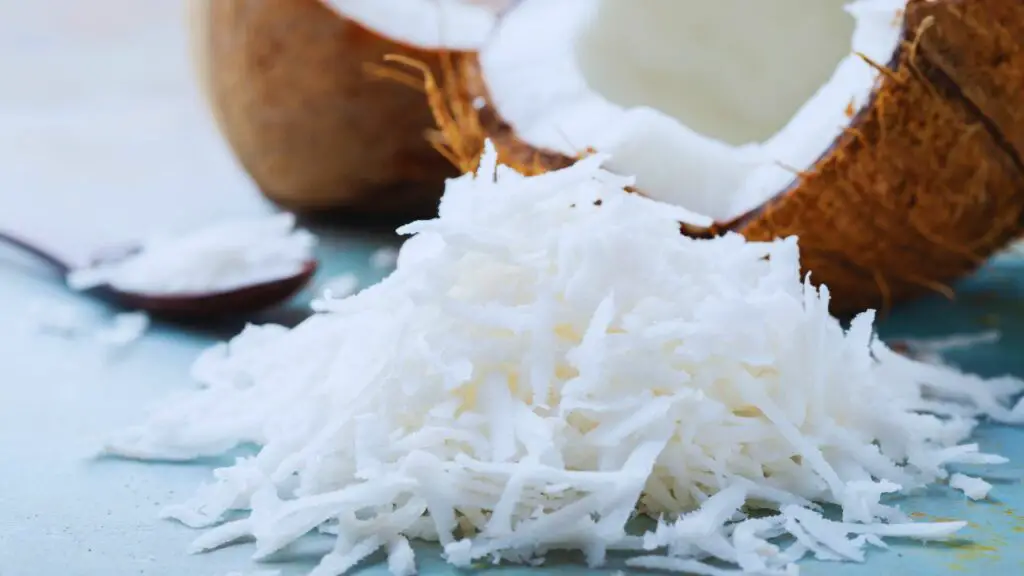
6. Semolina: It has a higher protein level than all-purpose flour, making the cake a tad bit coarser and denser than regular ones. However, it also adds a subtle nutty flavor that enhances the coconut.
7. Dates: The perfect companion to a coconut cake, dates add slightly flavorful sweetness. Before starting the recipe, be sure the dates are pitted, hydrated, and cut into small pieces.

8. Cashew: Adding cashews enhances the cake’s nutty flavors and adds a crunchy texture profile to contrast the softness of the bibikkan. While toasted cashews are good, your best bet is raw ones.
9. Raisins: You can incorporate them as they are or hydrate them beforehand to make them tender and soft. You can also increase or decrease the number of raisins to taste, which will also change the final sweetness of the cake.

10. Crystalized Ginger: While crystalized ginger is found in some specialized stores or online at Amazon here, you can also make your own at home. Cook the peeled and chopped ginger in a mixture of water, sugar, vanilla, and lemon juice on low heat, letting it simmer until the liquid evaporates and the remaining ginger is soft, sweet, and chewy.
11. Fennel, Cardamom, and Cloves: These are the traditional spices required for the bibikkan. While it’s best to have them whole to get extra-powerful flavors, the ground variety works just as fine.
Sri Lankan Bibikkan – The Ultimate Coconut Cake Guide
While it may seem complicated at first glance, you’ll soon see why this cake became one of my favorites—it’s effortless, fast, and addictively delicious!
Before reading along, don’t forget to check Nadee’s step-by-step video tutorial to get a general idea of the ingredients, how they should look, and the right way to proceed.
1. Sift and Prepare the Flour
Grab a clean, dry bowl and mix the 80g (2/3 cup) of all-purpose flour with the teaspoon of baking powder. You can use a whisk or a fork, but distribute the baking powder as evenly as possible, then set aside for now.

Top Tip: You can sift the flour and baking powder to incorporate air and get rid of lumps, which enhances the final texture of the cake.
2. Toast and Crush the Seeds

Toast the fennel seeds, cardamom pods, and cloves for approximately two minutes over medium heat to make them more flavorful and enhance their aroma. Be sure not to let them cook for too long, or they will burn.
Once done, move the seeds to the mortar and crush them into a fine powder with a pestle. Remember to remove the cardamom shells once they’re easy enough to peel off. Set aside for now.
3. Cook the Coconut and Jaggery
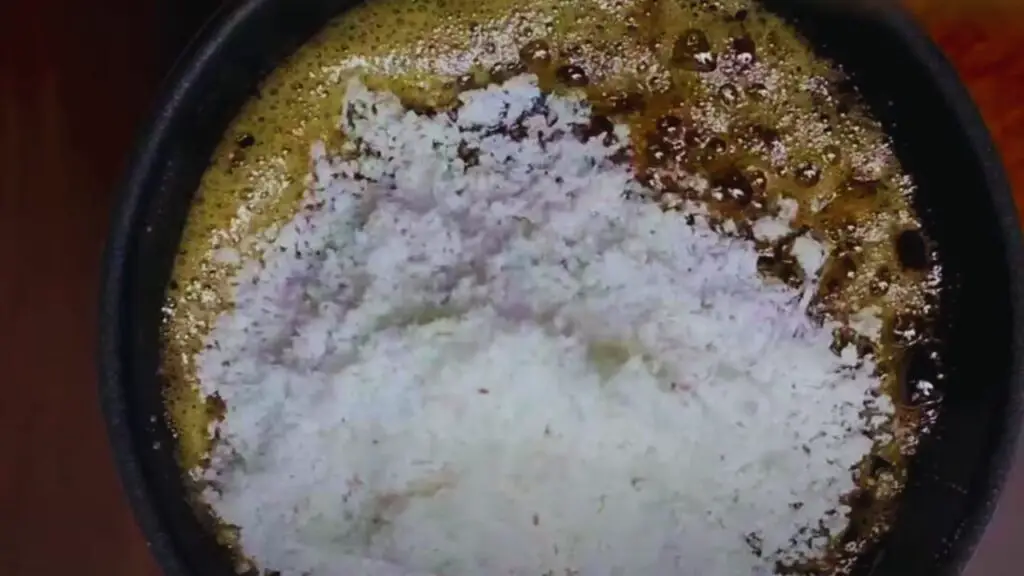
Mix a quarter cup of jaggery with 1 ½ cups of coconut treacle in a pan. Cook over medium heat, stirring continuously with a wooden or silicon spatula until the jaggery dissolves and the mixture starts to boil and bubble.
Then, add the shredded coconut and use the spatula to incorporate the mixture until every coconut piece is coated, then turn off the heat. The final texture should be golden brown, lumpy, and slightly wet.
4. Add the Vanilla, Dried Fruits, Spices, and Seeds
Immediately after turning off the heat, it’s time to incorporate the dried fruits, spices, and seeds into the coconut and jaggery mixture.

While still hot, incorporate the toasted seeds you previously prepared. Then add the salt, vanilla extract, dates, cashews, raisins, lime zest, and chopped crystalized ginger. Mix the ingredients thoroughly with a wooden or silicone spatula until everything is well distributed.
Top Tip: Nadee’s bibikkan recipe sticks to Sri Lankan tradition, and fans of the old-fashioned method insist these are the only spices worth including. However, many modern takes on the cake also add a dash of cinnamon or nutmeg, so don’t be afraid to try and see what you prefer!
5. Incorporate the Semolina and Flour
Once the previous ingredients are well combined, add 1/3 cup of semolina, using the spatula to mix it thoroughly and ensure it is incorporated evenly throughout the dough. Afterward, repeat the motions to incorporate the flour and baking powder blend you prepared earlier.
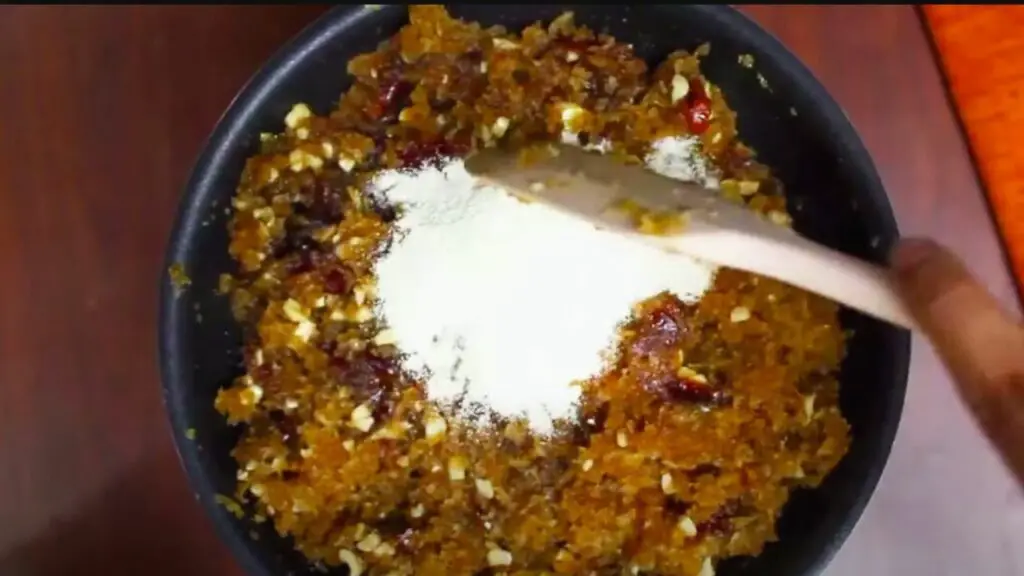
Once done, you should have a thick and moist cake batter that feels akin to playdough and has a beautiful golden brown coloring like the one in the video tutorial.
Top Tip: To add a flavorful touch, toast the semolina beforehand. Cook it over low heat for 3 to 6 minutes, stirring constantly, until it turns a light sand color.
6. Prepare the baking dish and bake
Line your preferred bakeware with parchment paper. Pour the cake batter into the pan, distribute it evenly, and smooth the top with a spatula. Once you’re satisfied with its appearance, bake it in a preheated oven at 320°F (160°C) for 50 minutes.
Top Tip: The recipe Nadee shared with me is ideal for a 6-inch baking dish, but you can adapt it according to what you have available at home.
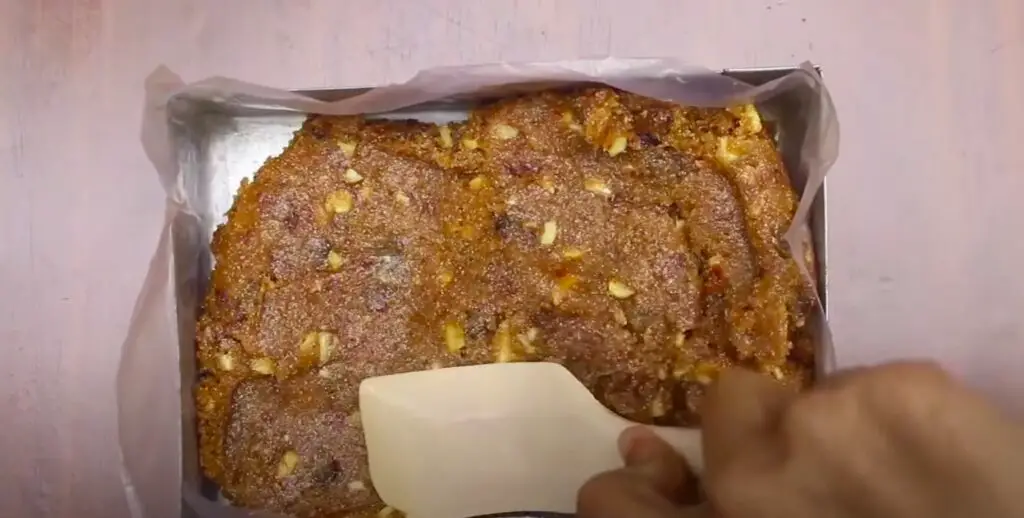
7. Decorate the top and bake for 25 more minutes
After cooking the cake for 50 minutes, remove it from the oven and set it on the table, then drizzle approximately four tablespoons of coconut treacle or syrup at the top, distributing it evenly through the surface with the help of a spatula or a pastry brush.
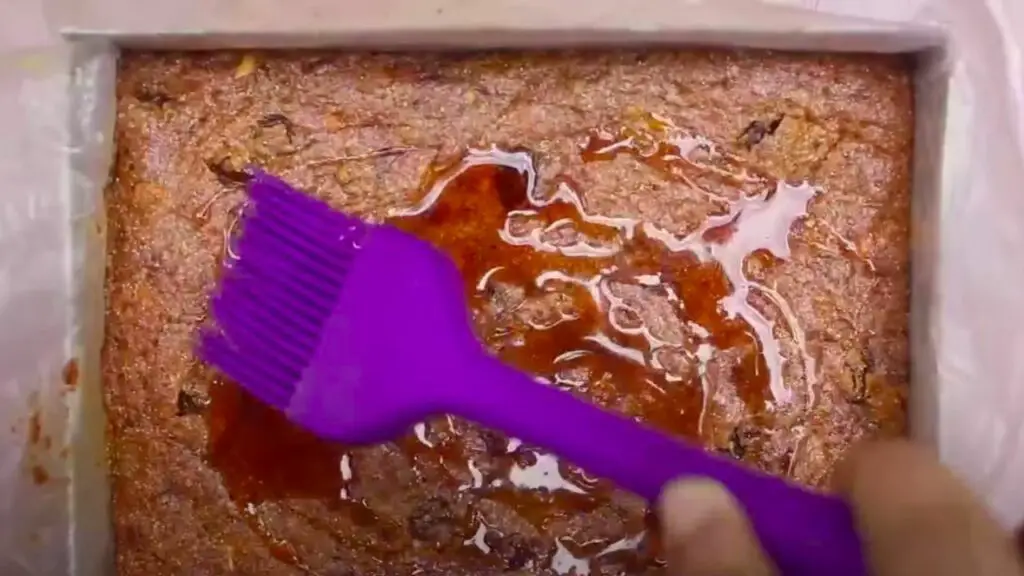
Once done, you can decorate the top with cashews cut in half. Then, lower the temperature of your oven to 300°F (150°C) and put the cake back in the oven for an additional 25 minutes.
Top Tip: Nadee’s traditional decoration is the standard, but you can always add a twist if you’d like. For example, sprinkle desiccated or toasted coconut shreds on top or decorate with powdered sugar.
9. Serve and Enjoy
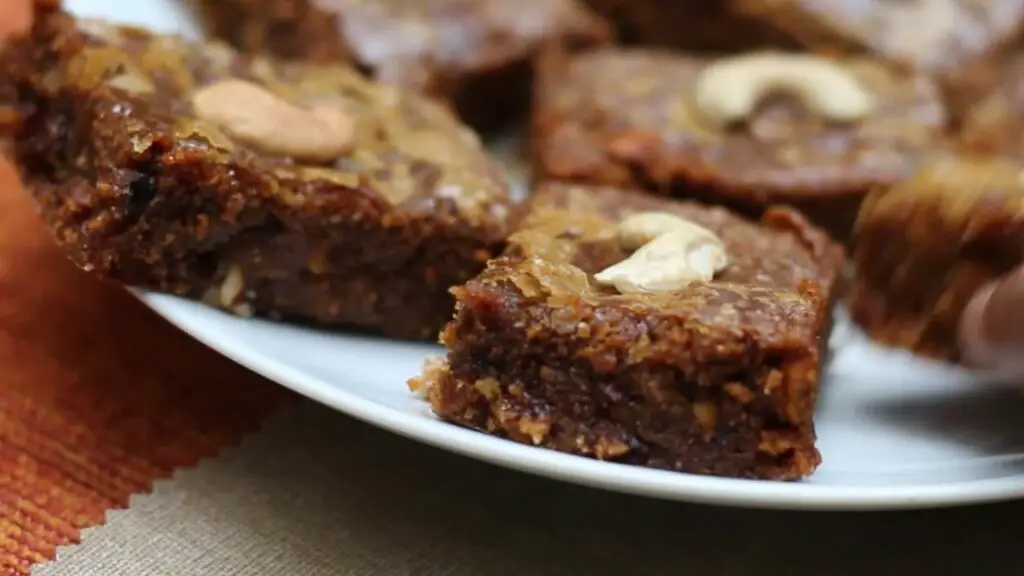
Take your cake out of the oven and enjoy as the delicious smell spreads through your kitchen. Let it sit on the counter for 10 minutes to cool down and set, then cut and serve.
This bibikkan recipe yields a deliciously soft, moist, and rich coconut cake worth coming back for seconds, so take your time to enjoy!
Conclusion
This Bibikkan Recipe? An absolute delight, I must tell you! It’s the perfect harmony of sweet, nutty, and spicy – truly a testament to the rich Sri Lankan culinary tradition. And guess what? It’s surprisingly simple to make. So, prepare to indulge your senses in this exotic, flavorful adventure and take a stab at this unique cake recipe.
If you enjoyed the moist and rich flavors of the Sri Lankan coconut cake, you’re in for a treat! You’ll definitely love the equally moist and wonderfully crumbly Sri Lankan love cake recipe I have right here: This Sri Lankan Love Cake Is My New Bake Love – You’ve Got to Try This!
